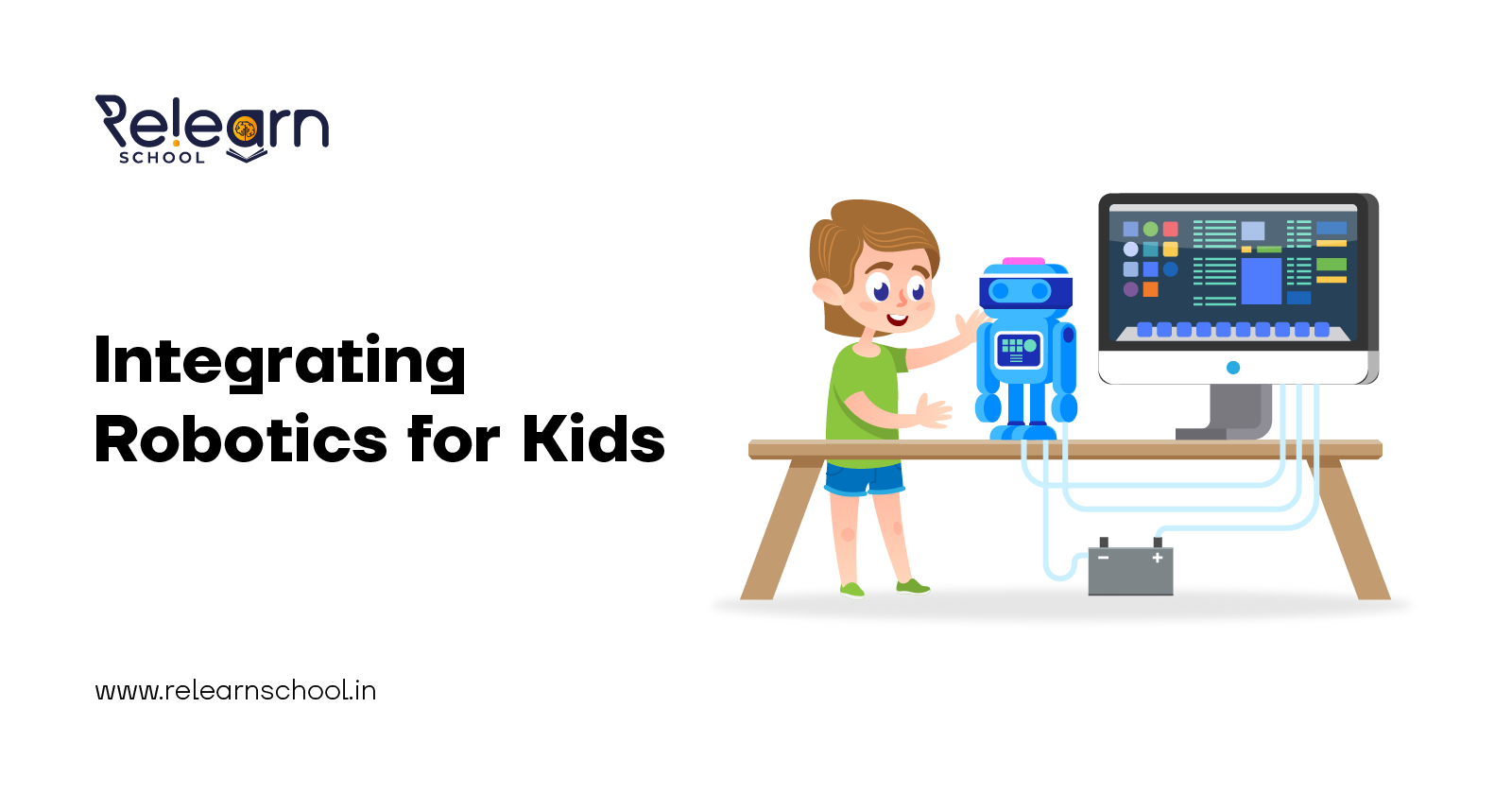Integrating Robotics for Kids
 Dheepashri Rajavel
Dheepashri Rajavel
In an era of rapid technological advancement, ensuring that our children are equipped with the skills needed to succeed in the future has become more crucial than ever. Enter robotics an exciting and innovative educational tool that has the potential to revolutionize the way kids learn, think, and interact with the world around them. Let's explore the compelling benefits of integrating robotics into the lives of young learners.
Learning Through Play:
Integrating robotics introduces a captivating new approach to education: learning through play. By interacting with robots, kids are not just absorbing information but actively participating in hands-on activities. This dynamic engagement not only makes learning enjoyable but also enhances retention and comprehension of complex concepts.
STEM Proficiency:
Robotics seamlessly integrates the STEM disciplines—science, technology, engineering, and mathematics—into a comprehensive learning experience. As kids design and program robots, they naturally absorb fundamental principles of physics, mechanics, and coding. This practical application of theoretical concepts lays a strong foundation for future academic pursuits and career paths.
Nurturing Problem Solvers:
The challenges presented by robotics projects foster critical thinking skills. When kids encounter obstacles during the creation and programming of robots, they learn to analyze problems, experiment with different solutions, and adapt their strategies based on trial and error. This process nurtures resilience and equips them with problem-solving skills applicable far beyond the realm of robotics.
Innovation at Its Best:
Integrating robotics encourages kids to think outside the box and innovate. As they design and construct robots, they are empowered to explore their creative potential, experiment with various designs, and test their imaginative ideas in a tangible way. This creative thinking is a valuable skill that will serve them well in all aspects of their lives.
Preparing for the Future:
In our technology-driven world, digital literacy is a non-negotiable skill. Integrating robotics allows kids to develop an early understanding of programming and automation, enabling them to navigate the digital landscape with confidence. This familiarity with technology not only enhances their academic progress but also prepares them for the tech-driven job market of tomorrow.
Learning Together:
Many robotics projects encourage teamwork and collaboration. Kids learn to work harmoniously, share ideas, and combine their strengths to achieve common goals. These collaborative experiences teach effective communication, active listening, and the importance of valuing diverse perspectives—a skill set that is invaluable in both academic and professional settings.
Bridging Theory and Practice:
Integrating robotics provides a tangible link between theoretical learning and real-world applications. Kids witness firsthand how scientific and mathematical concepts manifest in physical robots that perform practical tasks. This connection makes learning more meaningful, fostering a deeper understanding and appreciation for academic subjects.
Conclusion:
Integrating robotics into children's education is not just about introducing technology—it's about cultivating a mindset of innovation, critical thinking, and collaboration that will shape the future leaders and problem solvers of our world. Join us at ReLearn School and embark on a journey that integrates robotics into your child's learning experience. As we integrate robotics into education, we empower the next generation to unlock their potential, explore new horizons, and embark on a journey of growth and discovery that knows no bounds. Discover the endless possibilities that await your child through the transformative power of integrating robotics.
Subscribe to my newsletter
Read articles from Dheepashri Rajavel directly inside your inbox. Subscribe to the newsletter, and don't miss out.
Written by
